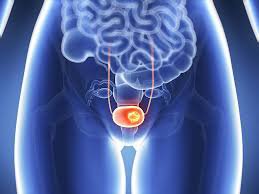Uses of Cysview
Cysview has been approved by the U.S. Food & Drug Administration (FDA) to help detect bladder cancer non-muscularly in patients with known or suspected bladder cancer. In this article, we will learn about the drug Cysview and the most important information.
1. What is Cysview?
Cysview is known as an optical imaging agent, commonly indicated for use in cases requiring cystoscopy to detect nonmuscular papillary cancer of the bladder, in suspected or known patients. presence of lesions based on previous cystoscopy.
Cysview dosage forms:
Cysview (hexaminolevulinate hydrochloride) is produced as a complete set consisting of:
A 10ml glass vial containing 100mg of Cysview powder (hexaminolevulinate hydrochloride) for intravenous solution. One polypropylene vial contains 50 ml of the active diluent for Cysview. One Luer Lock catheter adapter, after reconstitution, contains 2 mg/mL (8 mmol/L) hexaminolevuline hydrochloride.
2. Uses of Cysview
Cysview is used in conjunction with the Karl Storz D-Light C Photodynamic Diagnostic system (PDD), to perform cystoscopy with the blue light setting (Mode 2) as an aid to the white light setting (mode 1).
However, the use of Cysview still has many limitations such as:
Not a substitute for random bladder biopsies, or other procedures used to detect bladder cancer. Cannot be used repeatedly.
3. Dosage and usage
Training in the blue light cystoscopy technique of the Karl Storz D-Light C PDD system is especially necessary before using Cysview. The procedure is as follows:
Cysview powder reconstitution with all 50 ml of diluent was performed under aseptic conditions. Use Cysview solution as soon as patient recovers. In cases where it cannot be used, can be stored for up to 2 hours under 2° - 8°C (36° - 46°F) conditions in a labeled syringe, destroyed after 2 hours if not in use. Use an intravenous catheter to instill 50 ml of reconstituted Cysview solution into an empty bladder, retain in the bladder for 1 hour before evacuating and performing bladder examination. The cystoscopy should first be performed under white light, and then the entire bladder examination should be repeated under blue light. Record location information as well as the appearance of suspicious lesions, areas visible under both blue light and white light. It should be noted that all of the above steps are performed under sterile conditions, the doctor must use gloves during the reconstitution process. Because skin contact with hexaminolevulinate hydrochloride can increase the risk of drug sensitization.
In addition, use a 50ml syringe with Luer Lock oil throughout the dispensing process, to ensure that the correct concentration (2mg/ml) of the drug is obtained, otherwise connect a stable syringe to perform the process. Cysview injection into the bladder (hexaminolevulinate hydrochloride in solution laparoscope).
4. Note when using
4.1. Contraindications Cysview is not used for patients:
Have porphyria, bloody urine. BCG immunotherapy or intravenous chemotherapy within the past 90 days. Patients with known hypersensitivity or allergy to hexaminolevuline or aminolevuline derivatives. 4.2. Side Effects The most common adverse reactions associated with Cysview use were bladder spasms (occurring in <3% of patients), followed by hematuria, dysuria, procedure pain, and bladder pain. , urinary retention, headache (all occurring in ≤ 2% of patients).
Other side effects:
Pregnancy Category C: There are no data on humans or animals so use it only if absolutely necessary. Breastfeeding: There are currently no human or animal data, so caution should be exercised when administering Cysview to this population. Children: The efficacy and safety of Cysview in pediatric patients have not been established 4.3. Warnings and Precautions Anaphylaxis: The process is carried out and supervised by trained medical staff and available therapies, so it can be improvised if anaphylaxis occurs. Detection failure: In fact, Cysview may not be able to detect all malignancies. Therefore, always perform cystoscopy with white light (mode 1), followed by blue light cystoscopy (mode 2), not biopsies with blue light. False fluorescence can result from bladder trauma, inflammation, scar tissue, or previous bladder biopsy. 4.4. Precautions The practitioner should ask the patient the necessary information such as:
Diagnosis of the patient's family history of porphyria. The patient is allergic to aminolevulinic acid or prior to exposure to Cysview. Urinating blood. Patients who have had BCG immunotherapy or had chemotherapy in the bladder. In addition, the patient should be informed that Cysview will be retained in the bladder for approximately 1 hour from instillation of Cysview until the initiation of the cystoscopy procedure. In the event that the patient is unable to hold Cysview within 1 hour, although it is necessary to neutralize and clear it from the bladder, they can disable it and notify the healthcare professional about it. situation.
Above is important information about the use of Cysview as well as its process and importance in the treatment of bladder cancer. Please visit and get advice from your doctor for more detailed information about the process and duration of treatment.
Để đặt lịch khám tại viện, Quý khách vui lòng bấm số HOTLINE hoặc đặt lịch trực tiếp TẠI ĐÂY. Tải và đặt lịch khám tự động trên ứng dụng MyVinmec để quản lý, theo dõi lịch và đặt hẹn mọi lúc mọi nơi ngay trên ứng dụng.






